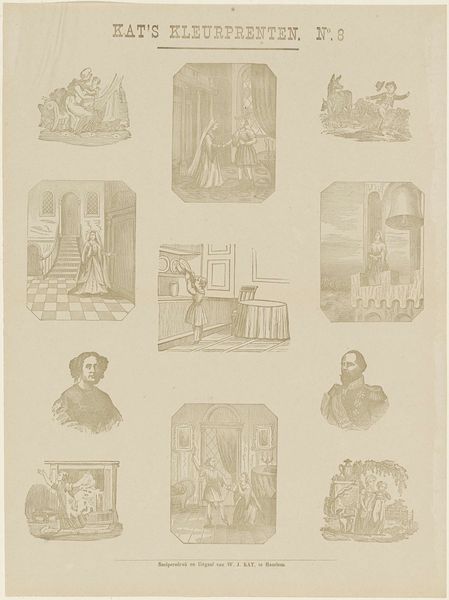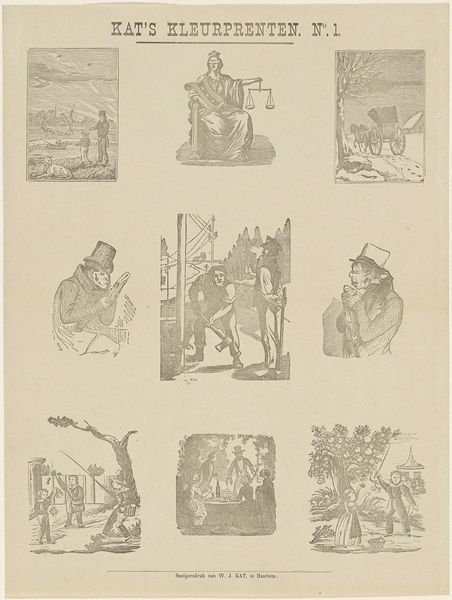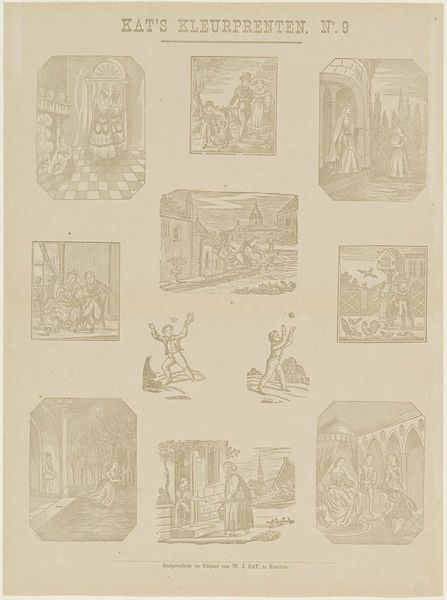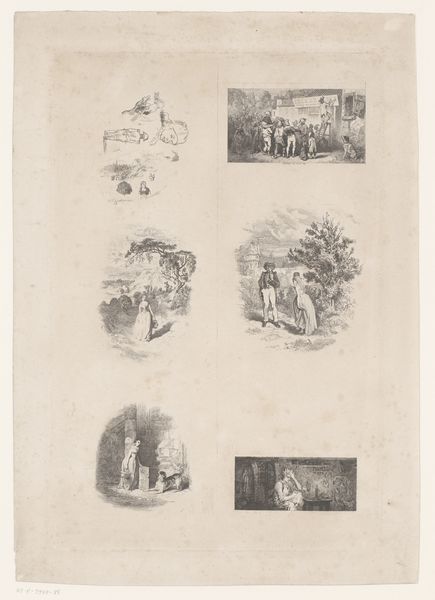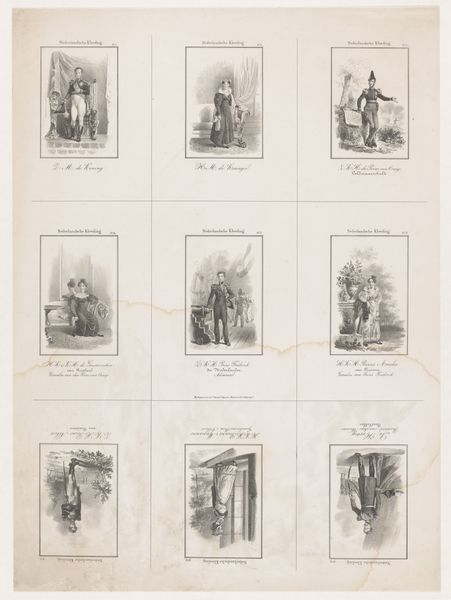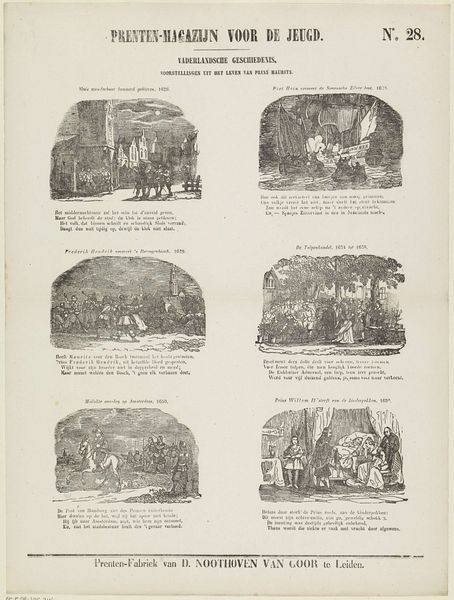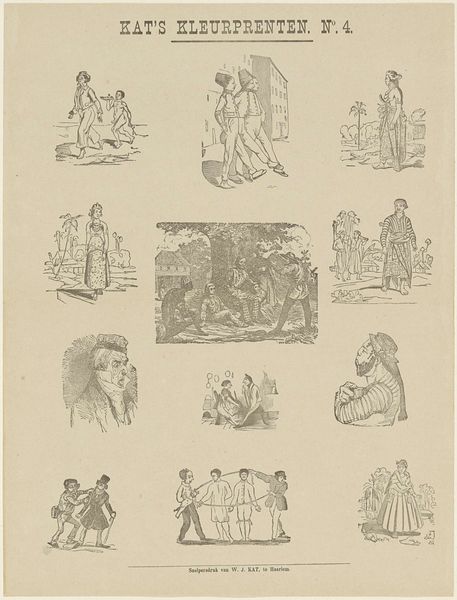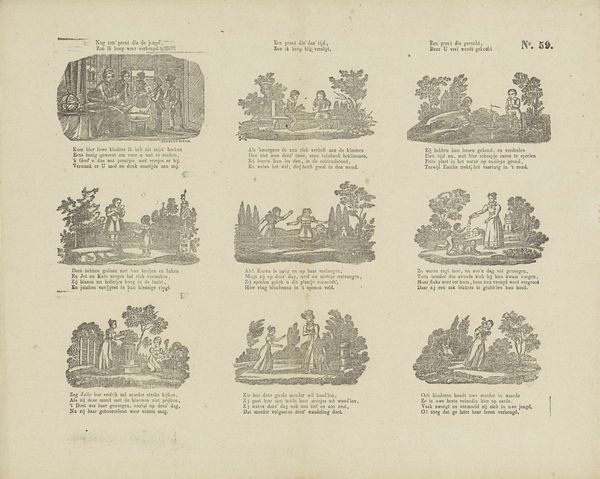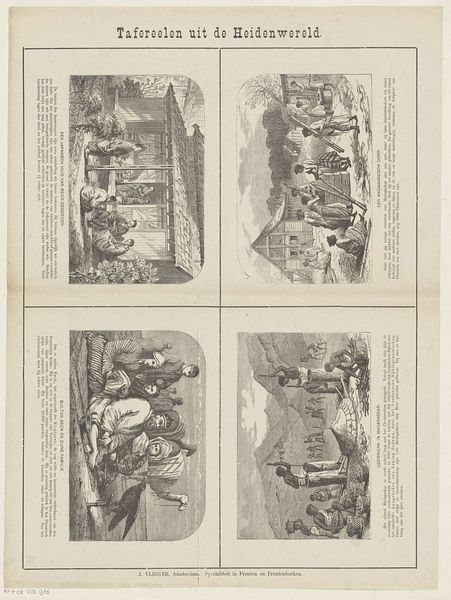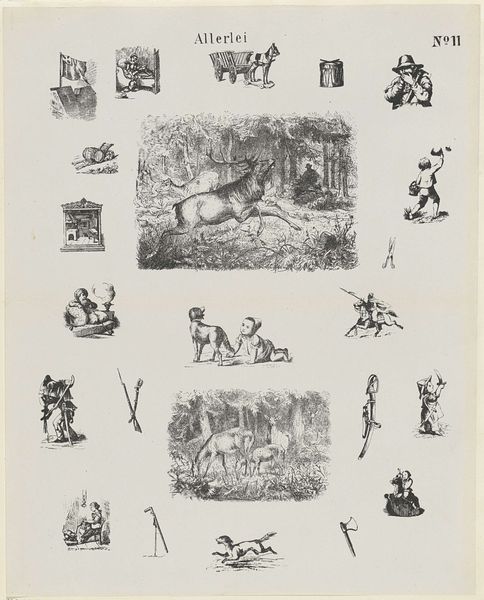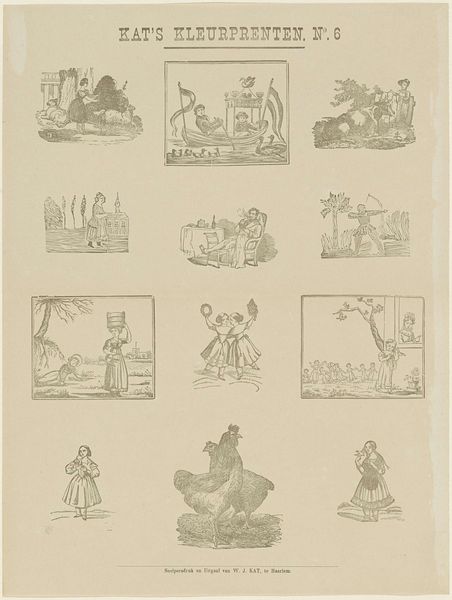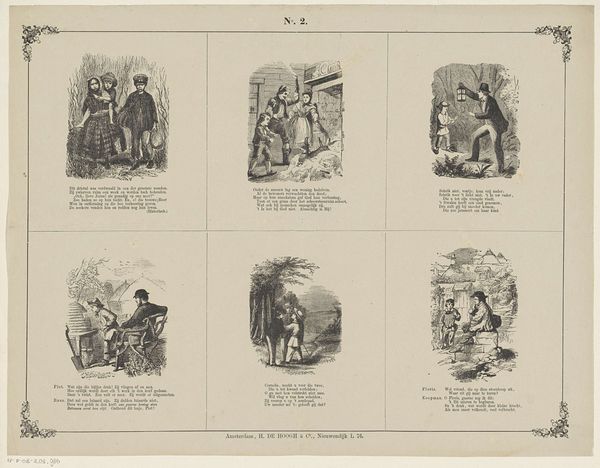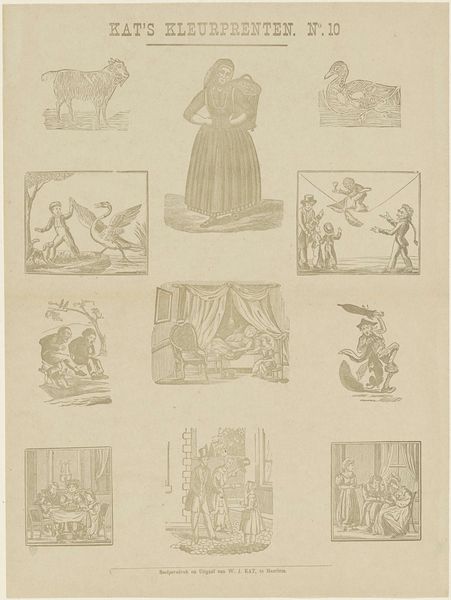
drawing, print, etching, ink, engraving
#
drawing
#
blue ink drawing
#
narrative-art
# print
#
etching
#
old engraving style
#
landscape
#
ink
#
cityscape
#
genre-painting
#
engraving
Dimensions: height 399 mm, width 297 mm
Copyright: Rijks Museum: Open Domain
Curator: Here we have “Verschillende voorstellingen,” or “Various Representations,” a print by W.J. Kat, dating roughly between 1862 and 1882. It combines etching and engraving techniques. My first thought goes to how these various scenes represent the Dutch, and possibly European, 19th-century identity. Editor: It has a strange dream-like quality, seeing all these scenes presented together. The line work in each is very precise, giving them all a certain weight despite their disparate themes. It feels nostalgic. Curator: Nostalgia for a perceived Golden Age perhaps? Each vignette acts as a snapshot of idealized life. There's landscape, genre scenes, even what appears to be a cityscape referencing a major monument. Note the way it references important cultural signifiers while domesticating them. Editor: Absolutely. And each tiny image pulses with emotional echoes. The archway has a feeling of triumph, the scene with the figures near a tree implies warmth of human interaction. And even the figures picking fruit from the tree suggests bounty and the simple pleasures of life. They create a symbolic story. Curator: Precisely! This "story" reflects how 19th century prints, and printed images, in general, created national and personal identities through affordable dissemination. Think about the cultural institutions gaining popularity during that era – the museums, galleries, and world expositions -- all designed to convey similar narratives. Kat is working in that same socio-political space, crafting visual arguments through composition and selection. Editor: Do you think the style – the "old engraving style," as some categorize it – was intended to further reinforce the idea of a return to idealized traditions and visual tropes? Curator: Possibly. These engravings emulate earlier printmaking styles, providing a visual link to an arguably "simpler" time. Yet they were using these established aesthetics to address and engage in new contemporary discussions. Editor: That interplay of old and new seems key here. It makes this "Verschillende voorstellingen" more than just a decorative print; it's a layered statement about cultural memory and values. Curator: Indeed. The very act of assembling these various representations reflects an active, on-going construction of collective identity. Editor: So, the image works almost like a mood board from the past? Intriguing.
Comments
No comments
Be the first to comment and join the conversation on the ultimate creative platform.
